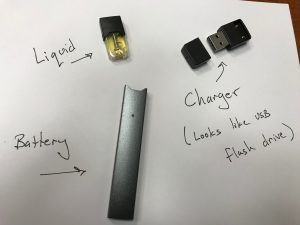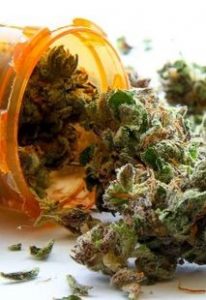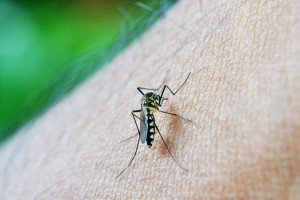I hope everyone had a great long-weekend with their families! In honor of the holiday, we are reposting a favorite article from several years ago, which still has incredible relevance today. Enjoy!
We were recently in a DuPage County high school, conducting a behavioral survey with seniors. Of the students we surveyed, 53% were currently sexually active. When asked if they knew how their parents felt about their choices, 55% said they did not know, or were confused, about their parents’ expectations.
Just after learning those statistics, I came across an excellent article. While it does not talk directly about sex, (and although I did not agree with everything the author said) it does have some important points to make in regards to the mixed messages we as parents sometimes send to our teenage girls.
It’s titled, “Under Pressure: Are Teen Girls Facing Too Much?” You can read it here.
 The author states that 25% of our teenage girls are suffering from some sort of serious psychological or physical clinical issues: suicide attempts, depression, violence, self mutilation, etc. His explanation for the staggering statistic – which he believes is on the rise – is that our young girls today are being presented with mixed messages, or what he calls a “Triple Bind (p.2)” Teenage girls today are hearing three conflicting expectations, and are struggling to meet all of them: 1. Excel at being a girl. 2. Excel at some guy stuff too. 3. Fit into culture’s current definition of success in regards to education, life goals, and beauty.
The author states that 25% of our teenage girls are suffering from some sort of serious psychological or physical clinical issues: suicide attempts, depression, violence, self mutilation, etc. His explanation for the staggering statistic – which he believes is on the rise – is that our young girls today are being presented with mixed messages, or what he calls a “Triple Bind (p.2)” Teenage girls today are hearing three conflicting expectations, and are struggling to meet all of them: 1. Excel at being a girl. 2. Excel at some guy stuff too. 3. Fit into culture’s current definition of success in regards to education, life goals, and beauty.
Be a girl, but don’t be just a girl. Their task is impossible. They know this, and although they desire to please society – their parents and teachers – they live under the threat of failure every day. It’s that tension that is leading them into dangerous behaviors.
In my opinion this argument is supported by the statistics above. Think about the messages we send our teenagers regarding abstinence. When I read parent comments after a school or parent program, over 50% of the time I read something like this: “I would love for my teen to choose abstinence, but I live in the real world. So I want her to be smart and use protection.” (Actual parent comment.)
Parents, do you see the connection? “Wait. But use protection.” We think we’re being helpful giving two expectations, but we’re not. We’re confusing our kids. It’s akin to saying, “Okay, honey. You have your driver’s license. I expect you not to drink in high school, but you will. So here, have a beer, and let’s go get behind the wheel and teach you how to drive well while under the influence.”
That may seem a ridiculous example to some, but look again at those percentages. Teenagers in our own county are unsure where their parents stand on the issue of premarital sex and abstinence. Girls who are already feeling myriad pressures to behave correctly must add this cloudy expectation to the pot. “Wait. But use a condom.”
Organizations like CASA and The Heritage Foundation have done studies that show that negative behaviors come in clumps – students that use alcohol, smoke, or hang with teens who do are more likely to become sexually active. (And vice versa.) And those sexually active teens are also more likely to report depression, suicidal attempts, or other dangerous behaviors.
Parents, we need to choose one set of expectations. And then we need to encourage our daughters to believe they can reach them. Perhaps then that 25% will start to decrease.

 ), discussing the trend in area schools, including suburban schools, says: “Some devices look like flash drives and recharge plugged into a laptop. The devices are smaller and easier to hide, and it seems less like smoking real cigarettes. ‘It’s not as smelly, or it’s marketed with fruity flavors or sweet dessert-type flavors,’…. But many of the sweet liquids still contain nicotine. One of the most popular brands now, Juul, says on its website the amount of nicotine in one pod is equal to a pack of cigarettes. A 2016 Surgeon General’s report found nicotine exposure during adolescence can be addicting and can lead to the use of traditional cigarettes and drugs like marijuana.”
), discussing the trend in area schools, including suburban schools, says: “Some devices look like flash drives and recharge plugged into a laptop. The devices are smaller and easier to hide, and it seems less like smoking real cigarettes. ‘It’s not as smelly, or it’s marketed with fruity flavors or sweet dessert-type flavors,’…. But many of the sweet liquids still contain nicotine. One of the most popular brands now, Juul, says on its website the amount of nicotine in one pod is equal to a pack of cigarettes. A 2016 Surgeon General’s report found nicotine exposure during adolescence can be addicting and can lead to the use of traditional cigarettes and drugs like marijuana.”



 ith Zika here in the U.S. But in the last week, two possible cases of mosquito transmission in Florida have emerged. What you may not have heard is that Zika is being transmitted sexually from infected men (via semen) to their sexual partners. This causes me great concern, and adds to the number of serious consequences of STDs.
ith Zika here in the U.S. But in the last week, two possible cases of mosquito transmission in Florida have emerged. What you may not have heard is that Zika is being transmitted sexually from infected men (via semen) to their sexual partners. This causes me great concern, and adds to the number of serious consequences of STDs.
